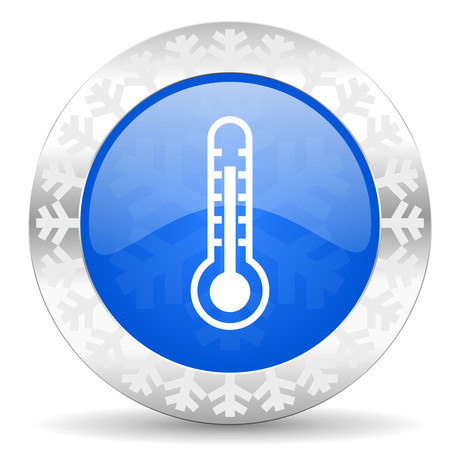Chamber vs room monitoring: which temperature sensors are best for your application?

Many chamber applications are cold temperature applications and usually temperature is the only parameter monitored. Cold air cannot hold much moisture so it is uncommon to use a humidity sensor in a cold temperature situation.
There are four different sensor types commonly used for cold temperature monitoring:
- Mercury or alcohol thermometer.
- Thermistor (thermal resistor).
- Resistance temperature detectors (RTDs) usually made from a pure metal, such as platinum, copper or nickel, around a ceramic or glass core.
- Thermocouple, two wires of different metals. The junction between the two metals will show a voltage change from a change in temperature.
In our experience, when folks want to monitor cold temperatures, they simply select a vendor, then accept the sensor type that the vendor has decided will work best in that particular application. So, in many cases the decision of what sensor to use is based on your choice of vendor. Monitoring does not require a high accuracy sensor for most applications, especially for cold temperatures, so most types of sensors can be used with equal efficacy. However, it can be valuable to understand how each of the four types of sensors work in case there are variables in your environments that will cause one sensor to function better, last longer, and measure more accurately.
Glass thermometers, while simple, reliable, and inexpensive, are used less often in industrial applications because they require human labour for daily checks, data recording, and manual reporting. Obviously these tasks are rife with opportunity for error. However, thermometers are still used in emerging nations where labour is inexpensive and higher tech solutions are prohibitively expensive. Thermistors, RTDs (Resistance Temperature Detector), and thermocouples are electronic versions of the thermometer. The temperature causes the electrical characteristics of the sensor to change, thereby allowing us to determine the temperature by measuring an electrical value, such as resistance.
These devices vary widely in terms of cost, initial accuracy, long-term stability, and range. For most applications in monitoring cold temperatures (8°C to -80°C), a device equipped with an RTD or a thermistor would be selected. For instance, the Vaisala Wi-Fi data logger HMT140 uses RTDs that measure from -200°C to +200°C with good accuracy (±0.5°C over that range). For very cold applications, such as liquid nitrogen cryogenic applications, a thermocouple can be used due to the extreme cold (as low as -196°C).
Here is a rough breakdown of the differences between the types of temperature sensors. These are general, and subject to disagreement.
- Thermocouples — inexpensive, linear response to temperature changes (easy to calibrate), relatively low accuracy, low stability, very wide range of temperatures that can be measured, durable, energy efficient (takes little energy to operate). Good for extreme temperatures like freezers, very low temperature applications, ovens, etc.
- Thermistors — inexpensive, non-linear response (harder to calibrate), high accuracy, high stability, narrow range of temperatures, durable, energy efficient. Excellent for ambient, controlled room temperature.
- RTDs — expensive, linear response, high accuracy, high stability, moderate range of temperatures, fragile, energy inefficient (needs external power). Also good for controlled room temperature, ambient monitoring.
The measurements from these electronic sensors are typically measured by a device like a chart recorder or a data logger. Chart recorders — due to the labour requirements of changing charts and the real possibility of mechanical failure — seem to be disappearing from the field, though they are still quite popular in some countries. We have a chart recorder replacement calculator tool that shows the costs of running these, versus the cost of data loggers.
Currently the most modern method is to collect the data from the electronic sensor and store it in a logger for later collection and download. The data logger is generally considered to be superior because there is a very low risk of data loss. The downside of the data logger is that we need to download the data. This disadvantage of the data logger was mitigated with the advent of automated monitoring systems where data is automatically downloaded over a network connection. No more walking from sensor to sensor, no more compiling manual reports.
Humidity is another beast altogether
Humidity is measured in both ambient and chamber applications, although as stated, because of temperature dependency it’s rarely measured in low temperatures. As a parameter, humidity is both simpler and more complex. It’s simple because when you measure humidity, you will almost always use sensor based on a thin-film capacitor. It’s complex because the sensors are prone to drift. Achieving accuracy in humidity sensors is time consuming and expensive because, unlike a temperature sensor, the sensor is degraded by the environment. When both temperature and humidity are measured, a thin-film capacitor humidity sensor is combined with a thermistor or RTD.
Originally published here.
Chewing gum can shed microplastics into saliva, study finds
Most of the microplastics detached from gum within the first two minutes of chewing, with the act...
Widespread applications of shake flask off-gas analysis across biotechnology
Despite the emergence of more sophisticated bioreactor systems, shake flasks continue to play a...
Scientists may finally know what makes Mars red
The water-rich iron mineral ferrihydrite may be the main culprit behind Mars's reddish dust,...




